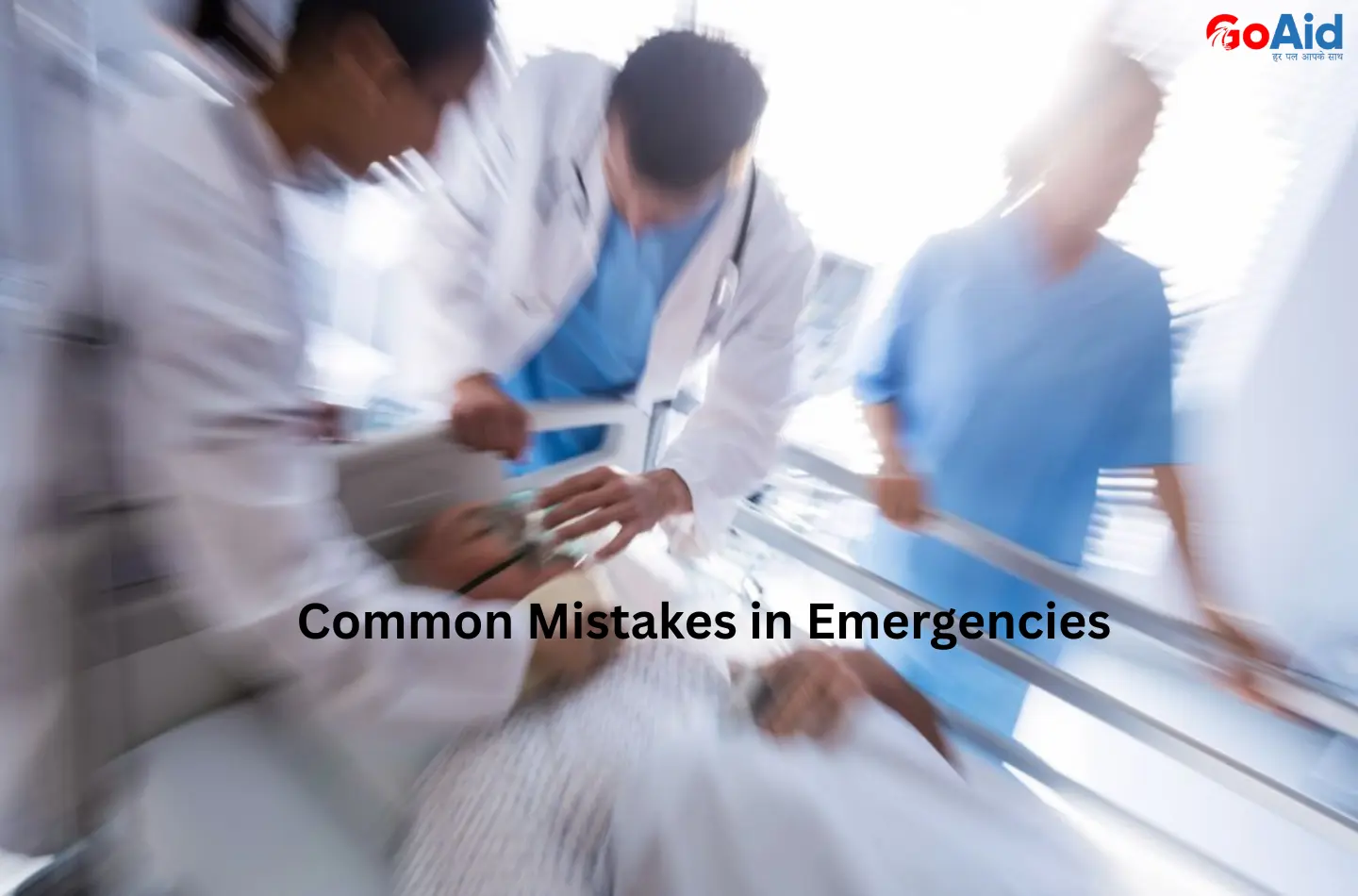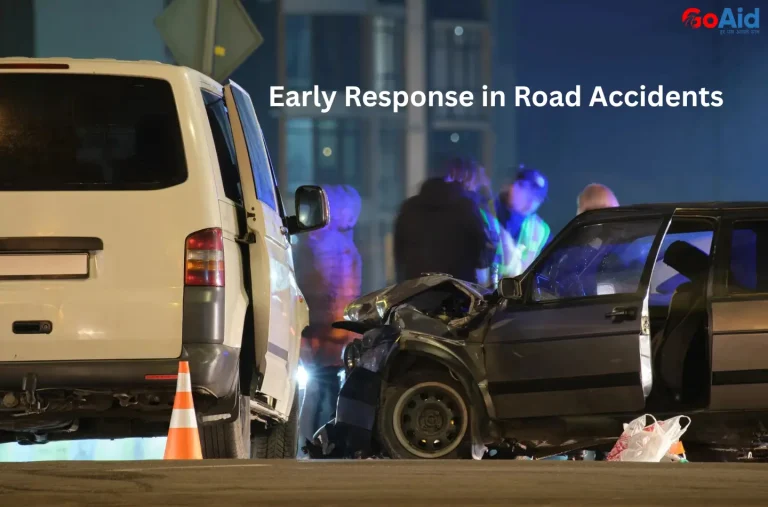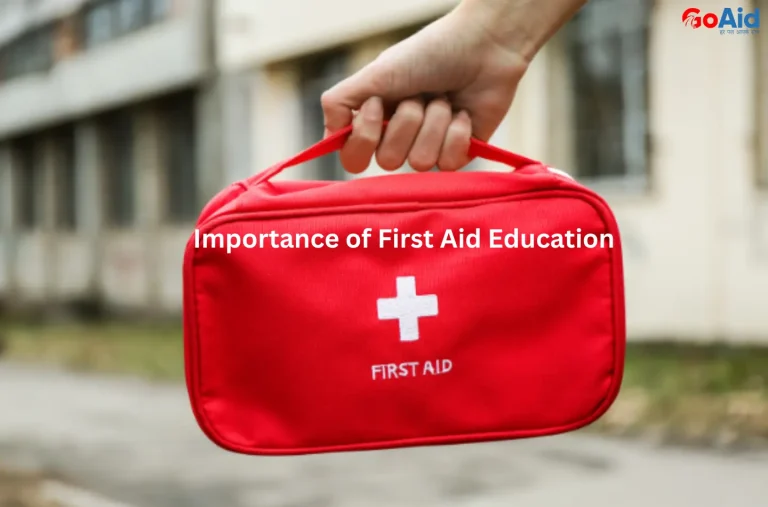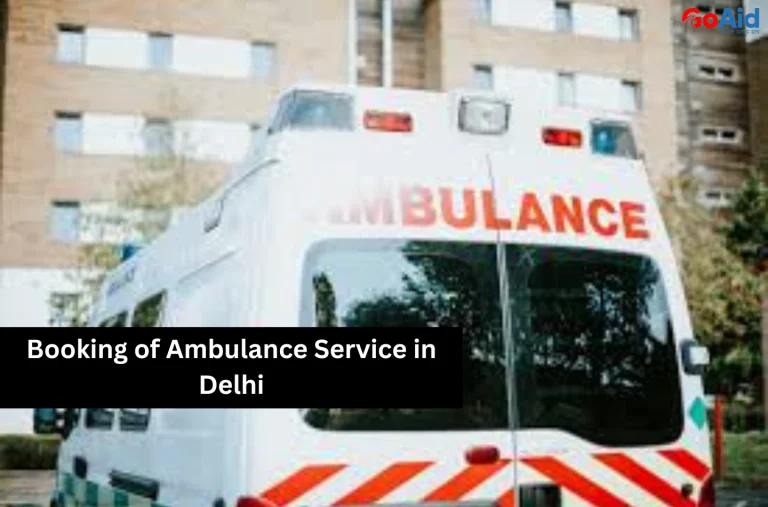During medical emergencies, quick and correct action can save lives, but unfortunately, many people make avoidable mistakes due to panic or lack of awareness. From moving an injured person incorrectly to wasting time searching for help, even small errors can worsen the situation.
This is why, in this blog, we have provided you with all the details about the common mistakes people make during emergencies, how panic affects decision-making, what to do before an ambulance arrives, and GoAidŌĆÖs advice for handling crises better. Are you willing to know about all these points in detail? Then read this blog to the end.
So, letŌĆÖs start ŌĆō
What Are the Most Common Emergency Response Mistakes?
During medical emergencies, people often make errors that can worsen the situation or delay help. Being aware of these mistakes helps improve response and saves lives. Here are the most common mistakes:
- Delaying the Ambulance Call
Many hesitate or try to self-manage the emergency instead of calling an ambulance immediately, which can lead to worsening of the patientŌĆÖs condition.
- Panicking and Acting Rashly
Emotional stress can cause people to make impulsive decisions like moving the patient unnecessarily, which may result in further injury or complications.
- Ignoring Symptoms
Failing to recognize the severity of symptoms, such as chest pain, difficulty breathing, or high fever, can delay life-saving treatment.
- Giving the Wrong Medication
Administering medication without proper knowledge, like painkillers or home remedies, can interfere with medical treatment and sometimes worsen the condition.
- Not Preparing Patient Information
Not having a patient’s history, allergies, or ongoing treatments readily available can slow down paramedics and hospital staff during critical emergency care.
- Incorrect First Aid Attempts
Attempting first aid incorrectly, such as using improper CPR technique or applying the wrong wound dressing, can be more harmful than helpful.
- Overcrowding the Patient
Too many people around a patient can create confusion, hinder medical help, and increase anxiety for both the patient and responders.
- Transporting a Patient Without Professional Help
Trying to move critical patients in private vehicles instead of waiting for a trained ambulance can risk injury or aggravate trauma.
- Failing to Follow Paramedic Instructions
Ignoring guidance from emergency responders on the phone or during transit can reduce the effectiveness of immediate care and delay treatment.
- Underestimating Minor Symptoms
Sometimes small signs like dizziness, mild chest discomfort, or confusion are overlooked, but they may indicate serious underlying conditions that require urgent attention.
How Does Panic Affect Your Decision-Making?
Panic during emergencies impairs judgment, slows response, and increases the risk of mistakes. Staying calm is crucial for effective action. Here are the key ways panic affects decisions:
- Impaired Thinking
Panic clouds logical reasoning. This makes it harder to assess the patientŌĆÖs condition accurately and prioritize life-saving actions.
- Delayed Response
Fear and anxiety can slow decision-making. This causes critical delays in calling an ambulance or administering first aid.
- Overreaction
People under panic may take extreme actions, such as moving patients unnecessarily or using unsafe methods, which can worsen injuries.
- Ignoring Expert Advice
Panic can lead to disregarding paramedicsŌĆÖ instructions over the phone. This reduces the effectiveness of pre-hospital care.
- Memory Lapses
Stress may cause individuals to forget essential details, like patient allergies, symptoms, or prior medical conditions, which are crucial for emergency treatment.
- Focus on the Wrong Priorities
Panic can make people focus on minor issues instead of urgent life-saving interventions, wasting valuable time in critical moments.
- Spreading Anxiety to Others
Visible panic can affect family members or bystanders. This increases confusion. This makes coordination difficult and potentially delaying emergency response.
What to Do Before the Ambulance Arrives
While waiting for an ambulance, proper actions can stabilize the patient and prevent worsening of the situation. Here are essential steps to follow before professional help arrives:
- Stay Calm
Remaining calm helps you think clearly, communicate effectively with responders, and reduce anxiety for the patient and bystanders.
- Call Emergency Services Immediately
Ensure that the ambulance is en route by providing accurate patient details, location, and emergency type to dispatchers.
- Check PatientŌĆÖs Vital Signs
Monitor breathing, pulse, and responsiveness to inform paramedics about the patientŌĆÖs current condition. This enables faster and more precise intervention.
- Ensure Safety of Surroundings
Remove hazards or obstacles around the patient to prevent additional injuries or accidents while waiting for help.
- Provide Basic First Aid if Trained
Apply first aid for bleeding, burns, or CPR only if you are trained. This ensures proper technique to avoid harm.
- Keep the Patient Comfortable
Position the patient appropriately, loosen tight clothing, and maintain warmth or hydration as required for their condition.
- Avoid Moving the Patient Unnecessarily
Only move the patient if thereŌĆÖs imminent danger; improper handling may worsen injuries, especially spinal or head trauma.
- Gather Patient Information
Prepare details like age, allergies, medical history, and medications for the paramedics to ensure prompt and accurate care.
- Communicate with Bystanders
Direct helpers calmly, assigning tasks such as guiding ambulance entry, assisting with first aid, or managing the crowd.
- Stay Close to the Patient
Remain with the patient. This offers reassurance and observing changes in condition, which can be reported to emergency responders upon arrival.
How GoAidŌĆÖs Quick Support Reduces Mistakes in Emergencies
GoAid Ambulance minimizes mistakes during emergencies by providing rapid, professional, and structured support from the moment a call is received. The trained dispatch team guides callers on the correct steps to stabilize the patient and ensures the most suitable ambulance is dispatched immediately.
Onboard paramedics deliver first aid, monitor vital signs, and communicate with hospitals to prepare for fast admission. This coordinated response prevents errors like incorrect handling, delays, or improper care.
GoAidŌĆÖs GPS-tracked fleet ensures the nearest ambulance reaches the scene swiftly, while multiple booking channels, clear protocols, and advanced equipment reduce confusion, stress, and panic.
By combining timely transport, expert medical care, and guidance for families, GoAid ensures efficient management of emergencies. This improves patient outcomes and minimizes avoidable mistakes before professional hospital care is reached.
Basic Steps Everyone Should Know During a Crisis
Being prepared for emergencies can save lives. Understanding fundamental actions ensures better handling before professional help arrives. Here are basic steps everyone should know:
- Call for Help Immediately
Contact an ambulance or emergency services as soon as possible. This provides accurate details and following dispatch instructions.
- Assess the Situation Quickly
Check the patientŌĆÖs consciousness, breathing, and visible injuries to determine the severity and immediate needs.
- Provide Safe First Aid
Administer first aid only within your knowledge and training. This avoids risky interventions that could worsen the condition.
- Keep the Patient Calm
Reassure the patient to reduce stress, prevent panic, and maintain vital signs while waiting for professional care.
- Maintain Clear Communication
Provide bystanders, responders, or family members with instructions and updates to coordinate help efficiently.
- Ensure Safety of the Scene
Remove hazards, traffic, or obstacles to prevent further injuries to the patient or rescuers.
- Prepare Medical Information
Have patient history, medications, allergies, and symptoms ready for emergency responders to facilitate quick and accurate treatment.
Myths About Medical Emergencies People Still Believe
Despite advancements in medical knowledge, many myths persist that can endanger patients during emergencies. Being aware of these misconceptions helps people act appropriately and save lives. Here are the most common myths:
- You Should Wait to See if Symptoms Improve
Delaying a call for help believing symptoms will resolve on their own, can worsen the condition, particularly in cases like heart attacks or severe bleeding.
- Cold Water Stops a Fever Faster
Using cold water or ice baths to reduce fever can be harmful. This causes shock or discomfort, rather than effectively treating the underlying condition.
- CPR Can Only Be Done by Professionals
Anyone trained in basic CPR can save lives; waiting for professionals can cost crucial minutes in cardiac emergencies.
- You Should Move a Patient Immediately
Moving a patient unnecessarily, especially with head, neck, or spine injuries, may aggravate trauma and lead to permanent damage.
- All Chest Pain Means a Heart Attack
Not every chest pain is a heart attack, but ignoring severe or persistent chest discomfort is risky; professional evaluation is always necessary.
- Home Remedies Are Enough for Serious Injuries
Relying solely on home remedies without professional care can worsen injuries, infections, or underlying conditions.
- Bleeding Can Be Stopped by Removing Objects
Removing objects embedded in wounds can increase bleeding and tissue damage; stabilizing and waiting for medical professionals is safer.
- Children DonŌĆÖt Need Immediate Care for Fever
High fever or persistent symptoms in children require urgent attention, as they are more vulnerable to rapid complications.
- Stroke Symptoms Will Go Away on Their Own
Ignoring signs of stroke, such as facial droop, arm weakness, or speech difficulty, delays treatment and can lead to permanent damage.
- You Can Delay the Ambulance if the Nearby Hospital is Open
Attempting to transport patients privately instead of calling an ambulance risks delays, improper care, and a lack of monitoring during transit.
- You Must Give Water or Food Immediately
Giving water or food to an unconscious or severely injured patient can cause choking or worsen their condition.
- Painkillers Solve Serious Emergencies
Taking painkillers may mask symptoms without addressing the underlying problem. This delays critical treatment during emergencies.
Conclusion
In conclusion, we have provided you all the details about common mistakes and myths people make during medical emergencies, how panic affects decision-making, and essential steps to follow before an ambulance arrives.
By understanding these errors, following proper safety measures, and relying on professional services like GoAid Ambulance, individuals can ensure faster, safer, and more effective emergency care. Awareness, preparation, and quick action can make a life-saving difference during critical situations. This helps both patients and their families navigate emergencies with confidence and efficiency.
















